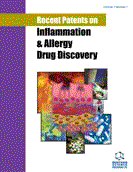Abstract
Background: Community-acquired pneumonia is an important cause of morbidity in developed countries and an important cause of morbidity and mortality in developing countries. Prompt diagnosis and appropriate treatment are very important.
Objective: To provide an update on the evaluation, diagnosis, and treatment of community-acquired pneumonia in children.
Methods: A PubMed search was completed in Clinical Queries using the key term “communityacquired pneumonia”. The search strategy included meta-analyses, randomized controlled trials, clinical trials, observational studies, and reviews. Patents were searched using the key term “community-acquired pneumonia” from www.google.com/patents, http://espacenet.com, and www. freepatentsonline.com.
Results: Generally, viruses, notably respiratory syncytial virus, are the most common cause of community- acquired pneumonia in children younger than 5 years. Streptococcus pneumoniae is the most common bacterial cause across all age groups. Other important bacterial causes in children younger than 5 years include Haemophilus influenzae, Streptococcus pyogenes, Staphylococcus aureus, and Moraxella catarrhalis. In children 5 years or older, in addition to S. pneumoniae, other important bacterial causes include Mycoplasma pneumoniae and Chlamydophila pneumonia. In the majority of cases, bacterial and viral pneumonia cannot be reliably distinguished from each other on clinical grounds. In practice, most children with pneumonia are treated empirically with antibiotics; the choice of which depends on the patient’s age and most likely pathogen. Recent patents related to the management of community-acquired pneumonia are discussed.
Conclusion: In previously healthy children under the age of 5 years, high dose amoxicillin is the treatment of choice. For those with type 1 hypersensitivity to penicillin, clindamycin, azithromycin, clarithromycin, and levofloxacin are reasonable alternatives. For children with a non-type 1 hypersensitivity to penicillin, cephalosporins such as cefixime, cefprozil, cefdinir, cefpodoxime, and cefuroxime should be considered. In previously healthy children over the age of 5 years, macrolides such as azithromycin and clarithromycin are the drugs of choice.
Keywords: Amoxicillin, chest infection, cough, fever, respiratory syncytial virus, Streptococcus pneumoniae, tachypnea.
 228
228 62
62 1
1


















